6 Best Low Light Lenses for Canon Cameras in 2020
Insufficient light is one of the toughest challenges any photographer will face. Dim conditions increase the time your camera needs to focus on a target and make recovering detail from shadows much harder. Lenses with narrow maximum apertures force you to compensate by increasing ISO, but that introduces image noise that can seriously bring down the quality of your photos.
Luckily, Canon users are spoiled for choice when it comes to wide-open lenses. This review covers the six best low light lenses for Canon in detail and will help you decide which to add to your collection next. We’ve covered the focal range from ultra-wide to telephoto and have also frown in some excellent primes for good measure. Take a look at Canon’s brightest and turn darkness from a challenge into a signature of your artistic expression.
| Budget |
|---|
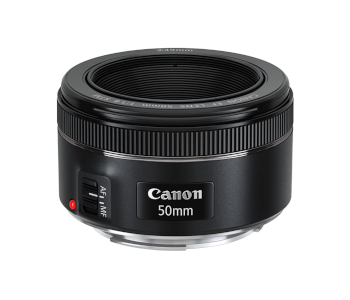 |
| Canon EF 50mm f/1.8 STM |
| 4.3/5.0 |
| Type: Standard prime |
| Image stabilization: No |
| This has minimal barrel distortion. |
| Check Amazon |
| Best Value |
|---|
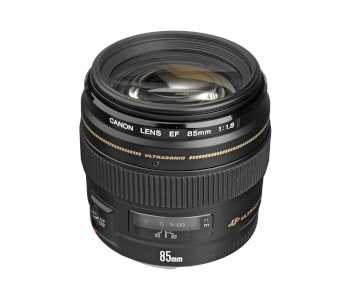 |
| Canon EF 85mm f/1.8 USM |
| 4.6/5.0 |
| Type: Medium telephoto |
| Image stabilization: No |
| Automatic and manual focus work equally well. |
| Check Amazon |
| Top Pick |
|---|
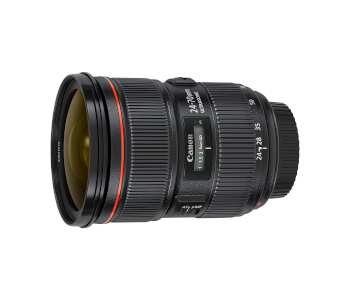 |
| Canon EF 24-70mm f/2.8L II USM |
| 4.9/5.0 |
| Type: Standard zoom |
| Image stabilization: No |
| Little to no flaring and chromatic aberration. |
| Check Amazon |
Low Light Lenses for Canon Cameras Comparison Table
| Image | Product | Overall Rating | Low-light performance | Image quality | Versatility | Price |
|---|---|---|---|---|---|---|
 | Canon EF 24-70mm f/2.8L II USM | 4.9 | 4.8 | 4.9 | 5.0 | Check Price |
 | Canon EF 85mm f/1.8 USM | 4.6 | 4.7 | 4.5 | 4.6 | Check Price |
 | Canon EF 70-200mm f/2.8L IS III USM | 4.8 | 4.8 | 4.7 | 4.8 | Check Price |
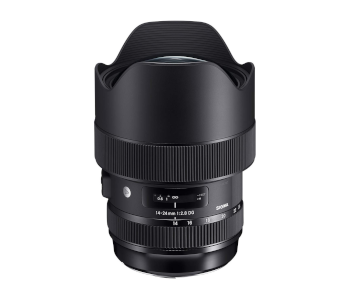 | Sigma 14-24mm f/2.8 DG HSM Art | 4.6 | 4.6 | 4.5 | 4.6 | Check Price |
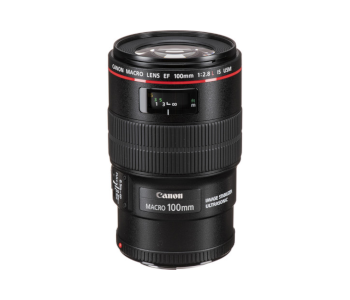 | Canon EF 100mm f/2.8L Macro IS USM | 4.4 | 4.4 | 4.5 | 4.4 | Check Price |
 | Canon EF 50mm f/1.8 STM | 4.3 | 4.6 | 4.0 | 4.4 | Check Price |
1. Best Overall – Canon EF 24-70mm f/2.8L II USM
Editor’s Rating: 4.9/5
The EF 24-70mm f/2.8L II USM is the best standard zoom lens Canon has ever made. Its wide aperture lets you take remarkable wedding photos no matter how dark the venue is or follow up the latest scoop with compelling images. The lens is built to last for decades, focuses fast and quietly, and has nearly flawless optical properties. If you can afford it, the decision to get one is a no-brainer.
Overview of Features
This standard zoom lens is part of Canon’s L line of premium-quality glass. You might not think it at first because of the plastic body, but spending some time examining its finely-engineered shape reveals there’s more to the lens than materials. For example, its metal mount is sealed with a rubber gasket that makes the lens weather-resistant. The zoom and focus rings are rubberized, wide, and easy to grip. The latter even has hard stops to make focusing at infinity a breeze.
The autofocus takes less than a fifth of a second to lock on targets, moving or otherwise. It’s driven by a precise Ultra Sonic Motor. True to its name, the motor operates silently and makes the lens a fine choice for wedding videos or documentaries. There’s some hunting in challenging light, but it doesn’t seriously impede the lens’s performance.
World-class sharpness is by far the EF 24-70mm f/2.8L II USM’s most outstanding attribute. It hits the ground running, delivering high edge and outstanding central clarity at 24mm and f/2.8. The results continue to impress as you zoom in, especially on f/4 through f/16. Narrowing the aperture all the way to f/22 leads to some detail loss due to diffraction, but quality remains superior. The only area where the lens loses a little of its luster is overall sharpness at 70mm when the aperture is wider than f/5.6.
There’s little contrast loss in direct sunlight thanks to Super Spectra coating, and chromatic aberration appears rarely. The lens’s diaphragm has nine rounded blades that make for creamy bokeh when combined with its wide aperture.
What We Didn’t Like
The EF 24-70mm f/2.8L II USM’s only real fault is a lack of image stabilization. It’s a sensible move by Canon as the lens is already heavy and bulky, but this omission forces you to use a tripod. There’s visible vignetting and barrel distortion when shooting at 24mm wide open. You can successfully eliminate both either in-camera or during editing.
| Tech Specs |
|---|
| Dimensions: 3.5 x 3.5 x 4.5 in. |
| Weight: 1.8 lbs. |
| Type: Standard zoom |
| Minimum focal length: 24mm |
| Maximum focal length: 70mm |
| Maximum aperture: f/2.8 |
| Minimum aperture: f/22 |
| Minimum focus distance: 1.3 ft. |
| Angle of view: 84° to 34° |
| Image stabilization: No |
| The Pros |
|---|
| Outstanding image clarity |
| Excellent build quality |
| Quiet and accurate autofocus |
| Little to no flaring and chromatic aberration |
| The Cons |
|---|
| No image stabilization |
| Barrel distortion and vignetting when shooting wide open |
2. Best Value – Canon EF 85mm f/1.8 USM
Editor’s Rating: 4.6/5
Canon’s EF 85mm f/1.8 USM is proof that a cheap lens can have surprisingly good optics and stand the test of time with ease. It’s more than a decade old yet continues to impress with fast and silent operation along with tack-sharp results regardless of light. It’s a wonderful choice for concerts, indoor sporting events, and any other indoor activity where you want to capture people’s expressions during unforgettable moments.
Overview of Features
The EF 85mm f/1.8 USM successfully balances build quality, weight, and practical design. It’s not the lightest telephoto prime around since nine elements in seven groups are required for such a wide aperture. However, it fits well with full-frame cameras and is short enough to share space with multiple other lenses in your camera bag. Build quality is excellent for sub-$400 glass, as evidenced by a sturdy plastic shell and metal camera mount.
The lens uses a similar motor to Canon’s leading standard zoom, meaning it’s quick to focus and does so without making a sound. There’s even less hunting in dim interiors since the aperture is two stops higher, though. The autofocus is accurate most of the time, but you can always intervene and improve upon it manually. Doing so is easy and pleasant as the focus ring has a nice texture and is dampened for fine control.
The EF 85mm f/1.8 USM lets you take pictures without having to frame the shot to compensate for low-quality edges. Its sharpness is good even at f/1.8, while the corners come into their own at f/3.5 onwards. The lens is among the best we’ve ever seen when handling color fringing; you’ll have to look very carefully or deliberately engineer absurdly contrasting scenes for it to make an impact.
There’s some vignetting at f/1.8, but it’s hard for the naked eye to tell the difference as the light disparity is smaller than 1 EV. There’s no barrel distortion, or rather, it’s so small that it doesn’t matter. What does matter is the dreamy bokeh this lens can pull off, and you’ll be seeing a lot of it given its purpose.
What’s Bad About It?
You’ll have to be mindful of sunlight and bright reflectors when shooting with the EF 85mm f/1.8 USM. Including them in the shot isn’t problematic, but bright indirect light causes loss of contrast and detail. You could mitigate this with a lens hood but have to buy one separately, and Canon’s original is flimsy.
| Tech Specs |
|---|
| Dimensions: 3 x 3 x 2.8 in. |
| Weight: 15 oz. |
| Type: Medium telephoto |
| Focal length: 85mm |
| Maximum aperture: f/1.8 |
| Minimum aperture: f/22 |
| Minimum focus distance: 2.8 ft. |
| Angle of view: 28° 30′ |
| Image stabilization: No |
| The Pros |
|---|
| Outstanding value for the money |
| Excellent low-light performance |
| Great all-around optics |
| Automatic and manual focus work equally well |
| The Cons |
|---|
| Handles bright indirect light poorly |
| Low-quality lens hood |
3. Canon EF 70-200mm f/2.8L IS III USM
Editor’s Rating: 4.8/5
Canon’s premium telephoto zoom lens picks up where our overall winner left off, delivering world-class performance in the telephoto range in low light or otherwise. It’s the perfect tool for capturing full-body portraits and headshots alike. The wide max aperture of f/2.8 also lets you turn up the shutter speed and immortalize award-winning split-second wildlife or sports moments. You’ll get a lot of exercise when using this lens with a Canon full-frame camera, but the results are more than worth it.
Overview of Features
This is the third iteration of Canon’s telephoto zoom. It brings minimal yet worthwhile improvements while costing the same as its predecessor. It’s harder to smudge and easier to clean thanks to a fluorine coating of the outer lenses. It’s also treated with Air Sphere Coating, which substantially reduces flaring.
The EF 70-200mm f/2.8L IS III USM is mid-sized for a lens of its caliber, but it’s still imposing at close to 8 inches long and weighing more than three pounds. Fortunately, the lens balances well on Canon’s leading full-frame models thanks to an adjustable collar ring. This lets you rotate the camera between landscape and portrait mode. You can attach the lens with either an Arca-Swiss or a standard tripod mount.
Canon outfitted this lens with the same autofocus system as the 24-70mm reviewed above. Its speed doesn’t suffer because of the wider focal range since you can set the minimum focusing distance to 2.5 meters when shooting far-away subjects. Unlike the standard zoom, the EF 70-200mm f/2.8L IS III USM has effective image stabilization that compensates for 3.5 stops.
You’ll find little fault with the lens’s optics. There’s some chromatic aberration at either focal length extreme, but it disappears entirely at 100-135mm. Barrel and pincushion distortions are present but unimportant and follow the CA’s pattern. The new Air Sphere coating combines with an existing fluorite and five aspherical glass elements to reduce flaring to a minimum. You can point the lens at the sun and get beautifully contrasting images with attractive eight-pointed sun stars.
Finally, there’s sharpness. It’s excellent at the center whatever the setting, and the edges start to keep up when you hit f/4. You’ll get the best results when shooting at f/5.6 or f/8, but every aperture and focal length combination is viable.
Are There Drawbacks?
The EF 70-200mm f/2.8L IS III USM is an expensive lens. Its only other shortcoming is pronounced vignetting at f/2.8 when zoomed in completely. You can go down a stop for an immediate improvement, though.
| Tech Specs |
|---|
| Dimensions: 3.5 x 3.5 x 7.8 in. |
| Weight: 3.3 lbs. |
| Type: Telephoto zoom |
| Minimum focal length: 70mm |
| Maximum focal length: 200mm |
| Maximum aperture: f/2.8 |
| Minimum aperture: f/32 |
| Minimum focus distance: 3.9 ft. |
| Angle of view: 34° to 12° |
| Image stabilization: Yes |
| The Pros |
|---|
| Exemplary build quality and balance |
| Handles flaring and CA very well |
| Produces razor-sharp and stable images |
| Impressive focusing speed and accuracy |
| The Cons |
|---|
| Expensive |
| Visible vignetting at f/2.8, 200mm |
4. Sigma 14-24mm f/2.8 DG HSM Art
Editor’s Rating: 4.6/5
Sigma’s ultra-wide zoom is the only exception to our otherwise Canon-exclusive lineup. Rightfully so, since it’s miles better than anything canon has to offer in this category if you don’t want to spend an absurd amount of money. Sigma’s lens is quick, built to last, and lets you capture wonderful night-time cityscapes or fabulous shots of fancy restaurant meals. Add to that its impressive sharpness, and you’ve got a lens whose usefulness and value are hard to beat.
Overview of Features
The Sigma 14-24mm f/2.8 DG HSM Art is a squat, heavy lens. It needs to be since 17 elements in 11 groups help it eliminate flaring. The body is a combination of metal and polycarbonate, while the rings are rubberized and ridged. There’s an indicator below the focus ring that shows the current distance in inches and meters. The Canon variant of Sigma’s lens also supports filters for its back end.
Sigma lenses in the top-tier Art line use Hyper Sonic Motors to achieve remarkable autofocus speeds at video-friendly sound levels. Locking on to a subject is a snap, and the lens doesn’t lose focus even if you start shooting fast-moving subjects wide-angle lenses usually can’t handle. Manual focus override is available, too, allowing you to step in and instantly make corrections.
The Sigma 14-24mm f/2.8 DG HSM Art’s sharpness results easily compete with the best Canon has to offer. You’ll love using it for landscape photos during sunset as edge and corner fidelity are well-preserved even at f/2.8. Things only get better as you narrow the aperture, and the quality barely dips with an increase in focal length. You’ll hit peak performance between f/5.6 and f/8, but don’t be afraid to push the lens to f/16 for those beautiful sun stars. Diffraction rears its head at f/22, making the setting much softer than the rest.
Seven elements are dedicated to eliminating flares and ghosting, so the Sigma 14-24mm f/2.8 DG HSM Art has no trouble capturing fine detail in high-contrast scenes. Color fringing appears rarely and is negligible when it does, while bokeh is smooth and maintains uniform roundness.
What We Didn’t Like
The Sigma 14-24mm f/2.8 DG HSM Art suffers from pronounced vignetting and barrel distortion at 14mm. Stepping down to f/4 greatly helps with the former, but you’ll want to avoid 14mm for architectural photography and any composition with lots of prominent straight lines. The lens has an integrated hood, and its outer front element is bulbous. That means you can’t attach polarizers to it.
| Tech Specs |
|---|
| Dimensions: 3.8 x 3.8 x 5.3 in. |
| Weight: 2.5 lbs. |
| Type: Wide-angle zoom |
| Minimum focal length: 14mm |
| Maximum focal length: 24mm |
| Maximum aperture: f/2.8 |
| Minimum aperture: f/22 |
| Minimum focus distance: 10.2 in. |
| Angle of view: 114.2° to 84.1° |
| Image stabilization: No |
| The Pros |
|---|
| Excellent zoom lens at a reasonable price |
| Outstanding sharpness |
| Reliable autofocus with seamless manual override |
| Great flare reduction |
| The Cons |
|---|
| Strong vignetting and barrel distortion at 14mm |
| Doesn’t support filters |
5. Canon EF 100mm f/2.8L Macro IS USM
Editor’s Rating: 4.4/5
Good low-light performance is crucial for macro lenses as you’ll often find yourself obstructing a light source to get the perfect shot of a bug or flower. Canon’s EF 100mm f/2.8L Macro IS USM handles challenging situations like a champ thanks to a wide aperture, excellent image stabilization, and all-around solid optical properties. It produces beautiful background blur, and photos shoot with it feature subjects that are clearly separated from their surroundings.
Overview of Features
The EF 100mm f/2.8L Macro IS USM is a fun-sized macro lens you’ll love to keep around as it’s neither too bulky nor too cumbersome. It doesn’t extend or rotate while focusing, so you can get polarizing filters and use it in sunny conditions while still taking advantage of fast shutter speeds. The body is made from engineering plastic with a metal mount and aluminum accents. We especially like the flush focus ring. It is dampened for accurate adjustments and easy to hold onto because of a ridged texture.
You’ll love the EF 100mm f/2.8L Macro IS USM if you’re used to handheld shooting as it has superb image stabilization. The system eliminates jittery shots and lets you compensate for three shutter speed shots. That way, you can snap pictures of whimsical subjects like butterflies or compensate for wind movement to get a clean image. You’ll want to focus manually for macro shots, but the AF is quick and dependable for when you’re using the lens as a standard 100mm telephoto.
Macro lenses are sharp as a matter of course, but this one is something else. It’s already tack-sharp when wide-open, especially at the center. The corners never manage to be as clear as the center, but they come close at f/5.6. Bokeh is the lens’s other stand-out feature. It produces both foreground and background blur with softness and uniformity.
Other optical properties aren’t as outstanding, but they’re still a cut above the competition. You’ll get some flaring when shooting in bright light, as evidenced by a green artifact that appears opposite the light source. Distortion is non-existent, and vignetting is only an issue at f/2.8.
What’s Bad About It?
The EF 100mm f/2.8L Macro IS USM handles lateral chromatic aberration well but has trouble with longitudinal CA. This type of fringing appears on circular shapes, so expect it to have an impact on bokeh if you don’t correct the issue during editing. Canon’s quality control needs to improve as not every instance of this lens is up to snuff. Contact them if yours is slow to focus or loud when doing so to get a working replacement.
| Tech Specs |
|---|
| Dimensions: 3.1 x 3.1 x 4.8 in. |
| Weight: 1.4 lbs. |
| Type: Macro lens |
| Focal length: 100mm |
| Maximum aperture: f/2.8 |
| Minimum aperture: f/32 |
| Minimum focus distance: 11.8 in. |
| Angle of view: 24° |
| Image stabilization: Yes |
| The Pros |
|---|
| Razor-sharp lens for macro and portrait photography |
| Excellent image stabilization |
| Compact and built to last |
| No distortion |
| The Cons |
|---|
| Pronounced color fringing |
| Quality control issues |
6. Best Budget Option – Canon EF 50mm f/1.8 STM
Editor’s Rating: 4.3/5
The updated version of Canon’s iconic “Nifty Fifty” has it all; it’s feather-light, has a bright max aperture, and costs less than you’d believe is possible for quality full-frame glass. It’s the kind of lens you’d pick up on a whim and be amazed at how useful it turns out to be. After all, 50mm is the ideal focal length if you’re going for a natural look with a human eye-like angle of view regardless of subject matter.
Overview of Features
It’s easy to forget that you brought the EF 50mm f/1.8 STM along as it barely protrudes from either full-frame or APS-C cameras and weighs less than six ounces. Don’t expect weather sealing or build quality on the level of L-series lenses. However, the prime’s construction isn’t shoddy; its focus ring is rubberized, the mount is made from metal, and the plastic won’t get scratched up easily.
The EF 50mm f/1.8 STM uses a Stepping Motor to power the autofocus. Its focus ring doesn’t rotate, so you can fine-tune manually as required. It’s one of the lens’s weaker features since focusing can take more than 0.3 seconds even when there’s ample light. Once it’s in focus, though, the lens successfully keeps track of subjects without hunting. Noise is another thing to consider as the EF 50mm f/1.8 STM isn’t whisper-quiet. Gradual zeroing in when shooting video reduces noise, but abrupt focus shifts can spoil candid shots.
The lens’s optical properties are exemplary for its price. Lateral chromatic aberration is completely absent, and the little barrel distortion that shows up isn’t an issue in real-life conditions. The simple 6-element configuration doesn’t stop the lens from tackling flaring well either. The f/1.8 aperture is the widest on review and can create strong background blur. Bokeh isn’t as creamy as with more expensive lenses, but it helps set the tone and draws attention to the subject.
Are There Drawbacks?
The EF 50mm f/1.8 STM‘s sharpness is a mixed bag. It’s best at the middle of the focal range, from f/5.6 to f/11. Central sharpness is good on either end of the aperture range, but the edges and corners are disappointingly soft at f/1.8. You can compensate for this by going for a dreamy, blurred look or framing the shot so that the center and periphery contrast.
| Tech Specs |
|---|
| Dimensions: 2.7 x 2.7 x 1.5 in. |
| Weight: 5.6 oz. |
| Type: Standard prime |
| Focal length: 50mm |
| Maximum aperture: f/1.8 |
| Minimum aperture: f/22 |
| Minimum focus distance: 13.8 in. |
| Angle of view: 46° |
| Image stabilization: No |
| The Pros |
|---|
| A well-rounded, versatile prime at a rock-bottom price |
| No chromatic aberration |
| Wide aperture makes for fast photos and dreamy background blur |
| Minimal barrel distortion |
| The Cons |
|---|
| Soft edges until stepped down to f/2.8 |
| Loud and slow autofocus |
Contents
- Low Light Lenses for Canon Cameras Comparison Table
- 1. Best Overall – Canon EF 24-70mm f/2.8L II USM
- Overview of Features
- What We Didn’t Like
- 2. Best Value – Canon EF 85mm f/1.8 USM
- Overview of Features
- What’s Bad About It?
- 3. Canon EF 70-200mm f/2.8L IS III USM
- Overview of Features
- Are There Drawbacks?
- 4. Sigma 14-24mm f/2.8 DG HSM Art
- Overview of Features
- What We Didn’t Like
- 5. Canon EF 100mm f/2.8L Macro IS USM
- Overview of Features
- What’s Bad About It?
- 6. Best Budget Option – Canon EF 50mm f/1.8 STM
- Overview of Features
- Are There Drawbacks?

